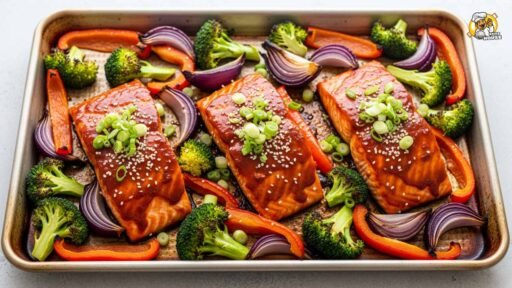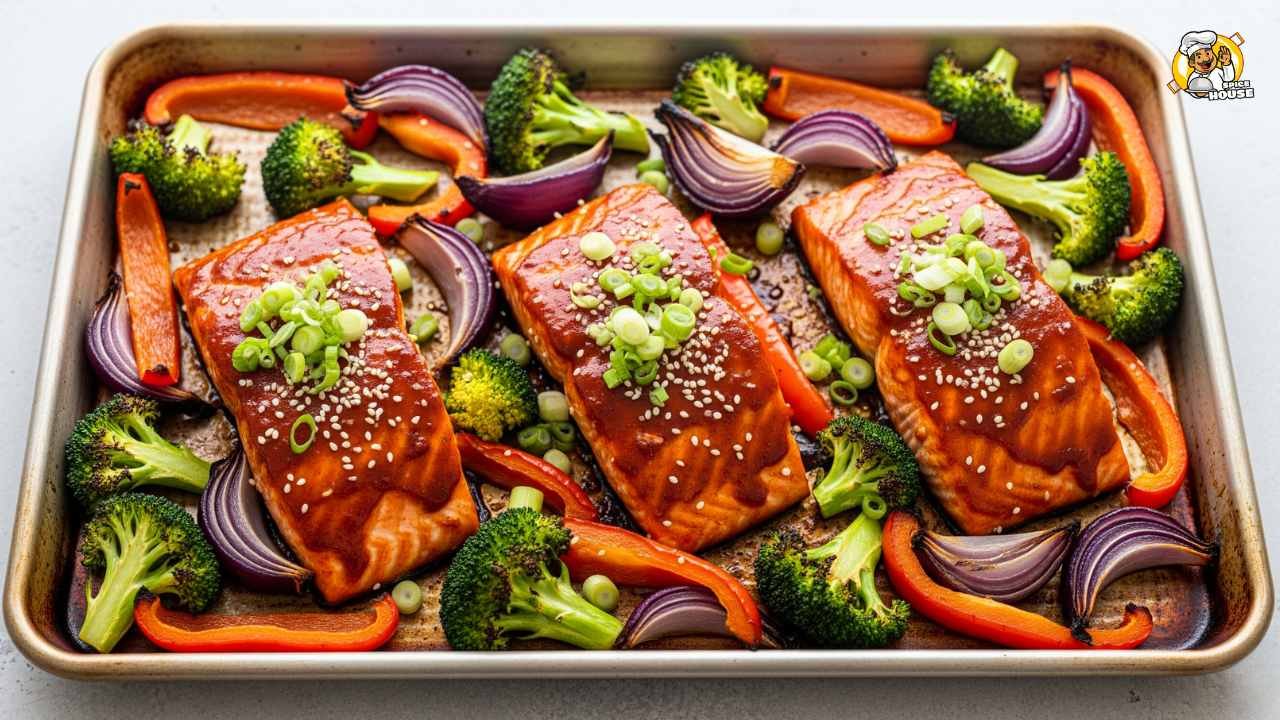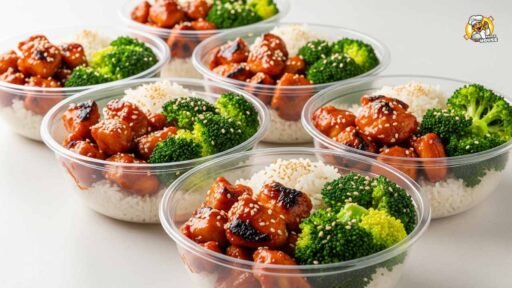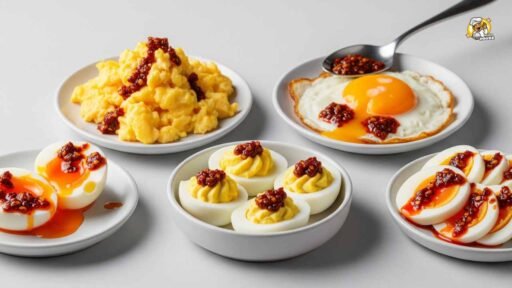Salmon prices hit record highs in 2023 and stayed volatile through 2024, according to Bloomberg’s coverage of the Nasdaq Salmon Index. Yet U.S. home cooks aren’t flinching—they’re buying more seafood for at-home meals and leaning on bold pantry flavors to justify the spend. Searches for gochujang, the Korean red chili paste, have more than tripled in the U.S. since 2017, per Google Trends. That’s the macro picture behind a micro trend you can taste tonight: Gochujang-Glazed Salmon, cooked start-to-finish on a single sheet pan, with blistered veg and a glossy, spicy-sweet glaze that flat-out sings.
Here’s the thing: the weeknight dinner economy is shifting. Rising seafood prices, a squeeze on restaurant budgets, and the mainstreaming of Korean flavors are creating a new at-home power play—premium proteins, pantry-first sauces, and zero-fuss cooking. It touches investors (salmon producers, big-box grocers like Costco), consumers (value-minded home cooks), and employees on the ground (fishmongers, gig shoppers, even meal-kit assemblers). The soft controversy is authenticity vs. accessibility: grocery private labels now sell “Korean-style” sauces in squeeze bottles while small makers fight for shelf space and credit. Consumers vote with their carts. And on Tuesday night, many of those carts hold salmon, broccoli, and a tub of gochujang.
The Data:
-
According to Bloomberg’s reporting on the Nasdaq Salmon Index, benchmark prices for farmed Atlantic salmon hit all-time highs in 2023 and stayed elevated into 2024. That price pressure pushed retailers to promote frozen and value-pack fillets to keep baskets moving.
-
Google Trends shows U.S. search interest for “gochujang” has more than tripled since 2017, with sustained peaks during weeknight hours. Translation: the ingredient moved from niche to normal, and not just on weekends.
-
The CDC has found that fewer than 20% of Americans meet the guidance of eating seafood twice per week, a gap the American Heart Association keeps highlighting. Sources say the simplest, tastiest at-home formats—like sheet-pan suppers—are what pull new seafood eaters in.
Gochujang-Glazed Salmon: Sheet Pan Dinner That Pops (Step By Step Guides)
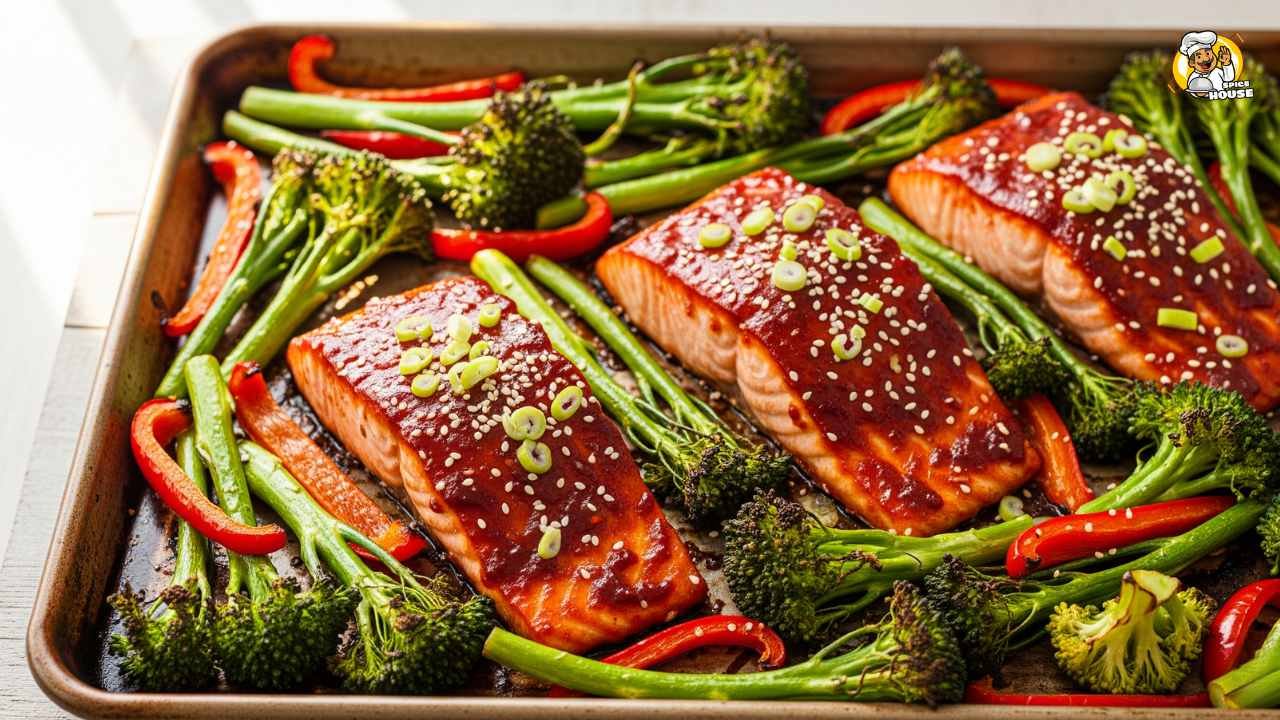
Step 1: Shop and Prep Like a Pro (Choosing Salmon, Sizing, Pantry Math)
Start with salmon you trust. If you’re buying at Costco or another big-box, look for skin-on, center-cut fillets or pre-portioned 6-ounce pieces. Farmed Atlantic salmon offers consistent fat and forgiving cook times. If you prefer wild, sockeye runs leaner and cooks faster—shave a few minutes off your roast. Figure 6 to 8 ounces per person. For a family sheet pan, two pounds serves four with leftovers.
Pat the fillets dry. Moisture is the enemy of browning. Pull the salmon from the fridge 15–20 minutes before cooking. That tempering step evens the temperature so your fish cooks through without chalky edges.
Pantry math sets your flavor baseline. You’ll need gochujang (2 to 3 tablespoons), soy sauce or tamari (1 tablespoon), rice vinegar for brightness (1½ tablespoons), honey or brown sugar (1 tablespoon), toasted sesame oil (1 teaspoon), plus aromatics: 2 garlic cloves (grated) and 1 teaspoon grated fresh ginger. Add 1–2 tablespoons of water to loosen the glaze. If you like heat, a pinch of gochugaru or a splash of chili crisp won’t hurt. If your gochujang brand leans extra salty, back down the soy by half a tablespoon.
One more smart step: set up your sheet pan. Line a heavy rimmed pan with foil for easy cleanup and top it with parchment to avoid sticking. That double layer is a small kitchen hedge against sugar in the glaze scorching. Rack in the upper third of the oven, 425°F. Hot, but not too hot—you want fast caramelization and tender fish.
Step 2: Build a Glossy, Balanced Glaze (Taste First, Cook Second)
Mix the glaze in a small bowl: gochujang, soy/tamari, rice vinegar, honey, sesame oil, garlic, and ginger. Add 1 tablespoon water and whisk until smooth and shiny. Dip a spoon in and taste. You want bold but not harsh. If it’s thick like paste, splash a bit more water. If it bites too hard, a drizzle more honey evens it out. If it’s too sweet, add ½ teaspoon rice vinegar or a squeeze of lime.
This is the balancing act that separates restaurant-ready flavor from a one-note sauce. Gochujang brings depth, salt, and fermented funk. Soy adds umami. Rice vinegar brightens. Honey helps the glaze lacquer as it meets oven heat. Sesame oil is the perfume. Garlic and ginger give lift and bite. You can stir in ½ teaspoon miso if you crave extra backbone, but it’s optional.
Reserve 1–2 tablespoons of the glaze in a clean bowl. That’s your finishing sauce, untouched by raw fish. Don’t skip that split; it’s the difference between shiny and spectacular when you plate.
Glaze strategy matters. Brush a light coat on the top and sides of the salmon—thin is better than thick right now. Heavy sugar burns before the fish cooks. You’ll add more halfway through, then finish with that glossy reserved spoonful at the end. Think two coats in the oven and one at the table.
Pro tip: if your kitchen runs cold and honey clumps, warm the bowl over the preheating oven vent for a minute. The glaze loosens and paints like velvet.
Step 3: Veg That Can Keep Up (Layering Cook Times on One Pan)
The secret to a perfect sheet-pan supper isn’t the main protein. It’s timing your vegetables. Pair the salmon with veg that roast in the same window or that you can stagger. Great choices:
-
Fast: broccolini, snap peas, zucchini, bell peppers, scallions, asparagus.
-
Medium: carrots (thin batons), green beans, cherry tomatoes, mushrooms.
-
Slow: sweet potatoes (½-inch cubes), baby potatoes (quartered), red onions (wedges), and cauliflower.
For a 20–25 minute total, start with slow veg first. Toss 2 cups diced sweet potatoes and 1 red onion (wedges) with 1½ tablespoons olive oil, ½ teaspoon kosher salt, and a few grinds of black pepper. Spread on the sheet pan and roast 10 minutes at 425°F. Meanwhile, trim 2 bunches of broccolini, pat your salmon dry again, and brush on that light first glaze.
Pull the pan, push the potatoes and onions to the sides, and lay the salmon in the center, skin-side down if you kept the skin on. Scatter broccolini around. Drizzle the veg with another teaspoon of oil and a pinch of salt, back in the oven.
If you prefer all fast veg, skip the pre-roast. Zucchini half-moons and bell pepper strips can go in at the same time as the salmon. Just keep the pieces moderate in size so they brown before the fish finishes.
A small detail, big payoff: don’t crowd the pan. Air needs space to circulate. If the veg steams, you lose char and texture. Use two pans if needed and rotate halfway through.
Step 4: Roast, Brush, Broil (The Timing That Makes It Restaurant-Grade)
With the oven at 425°F, the salmon cooks fast. For 1½-inch-thick center-cut fillets, plan 12–14 minutes total. Thinner wild sockeye can finish in 8–10. After 6–7 minutes, pull the pan and brush another thin coat of glaze on the fish. This build-up creates that gleaming lacquer without burning.
Check doneness in a few ways:
-
Visual: the top looks glossy and set, and the sides render small beads of white albumin—but not a lot.
-
Feel: a gentle press with a finger should yield easily, not spring back like raw.
-
Thermometer: 120–125°F for medium-rare, 130°F for medium. Carryover heat adds 2–3 degrees after you pull it.
For a final pop, flip the oven to broil on high for 60–90 seconds. Watch it. Sugar can go from lacquer to char fast. You want blistered edges and a shiny top. Pull the pan and rest the salmon for 3–4 minutes to let juices settle.
If you cook skin-on, the skin crispness depends on the glaze not pooling underneath. Pat the skin dry and make sure the parchment under the salmon isn’t slick with oil. You can also slide a thin spatula between skin and flesh after cooking and leave the skin behind if you prefer it off.
A note on smell and smoke. Open a window before you broil. High heat plus sugars throws a quick perfume that lingers—in a good way if you ask me.
Step 5: Finish, Plate, and Stretch It (Sauce, Seeds, Citrus, Leftovers)
Now make it look like a restaurant plate with two easy moves. First, brush that reserved clean glaze over the salmon. It adds sheen and a fresh bite of heat. Second, shower with texture and contrast: toasted sesame seeds, sliced scallions, a few cilantro leaves, and a squeeze of lime. Citrus is not traditional here, but that tang cuts the richness and makes the flavors leap.
Plate with your roasted veg and any pan juices. If you want starch, spoon over warm rice (jasmine or sushi rice), barley, or even garlicky couscous. For a low-carb path, add a quick cucumber salad (rice vinegar, pinch of sugar, salt, sesame oil).
Leftovers are a feature, not a bug. Cold, the salmon flakes into soba noodles with a splash of rice vinegar and sesame oil. Or toss into a crisp salad with shredded cabbage, carrots, and a spoon of yogurt whisked with gochujang for a five-minute lunch. If you need to rewarm, use low heat in a covered skillet with a tablespoon of water or stock, 3–4 minutes. The microwave works in 20–30 second bursts, but go gently.
Scaling up for a crowd? Use two pans. Stagger them on the top and middle racks and rotate halfway. Double the glaze, but keep the same thin-coat, mid-cook brush, and quick broil formula. It scales cleanly because the method protects against over-reduction and scorch.
Ingredient recap for four:
-
1¾–2 pounds salmon fillet, center-cut, skin-on preferred
-
2–3 tbsp gochujang
-
1 tbsp soy sauce or tamari
-
1½ tbsp rice vinegar
-
1 tbsp honey or brown sugar
-
1 tsp toasted sesame oil
-
2 garlic cloves, grated
-
1 tsp grated fresh ginger
-
1–2 tbsp water to loosen
-
2 cups diced sweet potatoes, 1 red onion (wedges), 2 bunches broccolini
-
Olive oil, salt, pepper
-
To finish: sesame seeds, scallions, lime
The People
“A lot of our salmon is walking out with a jar of heat,” a former seafood category manager at a national grocer told me. “When prices spiked last year, customers traded down on species or format—more frozen, more value packs—but they traded up on flavor. Gochujang and chili crisps became the new default.”
A chef who consults for fast-casual chains echoed it: “Weeknights are a flavor tax. If your sauce doesn’t pop, you’ll order in. Gochujang is the rare pantry item that carries heat, body, and umami, so it reads as ‘cooked all day’ even if you roasted it for 12 minutes.”
Employees feel the shift, too. Fish counter teams say demand for pre-portioned salmon rose as households planned sheet-pan meals. Private-label innovation surged, often in parallel with small-batch Korean brands trying to grab a sliver of shelf space. The sourcing debate—authenticity vs. ‘Korean-style’—is real in the aisle, even if dinner hits the table either way. One merchandiser put it bluntly: “If Costco ever launches a Kirkland gochujang, the whole category resets overnight.”
The Fallout
For consumers, sheet-pan salmon with a pantry glaze creates a simple loop: fewer pots, faster cleanup, reliable protein, high flavor. It’s value, even at a premium per pound, because it replaces a $20–$30 entrée out with a $6–$8 portion at home. That matters when prices wobble.
For retailers, the impact is tactical. Big boxes push value packs of salmon and family-sized gochujang because they drive repeat baskets. Once a household keeps a tub of gochujang in the fridge, it changes the dinner algorithm. Wednesday’s salmon, Friday’s tofu, Sunday’s wings—same core sauce, different outcomes. That boosts loyalty and reduces promotional waste. It also invites copycats. Expect more cross-merch (salmon + gochujang + broccolini endcaps) and more meal-starter bundles in the app.
For Korean food makers, mainstream demand is an opportunity and a risk. Traditional gochujang relies on fermentation, rice, and chili paste with a specific funk. Some mass-market versions lean sweet, thick, and one-note to chase an entry palate. If private labels flood the shelf, small producers will fight to defend margins and identity. The smartest grocers will segment: an approachable private label on the middle shelf, an authentic fermented paste at eye level with a story and QR code.
For salmon producers, sticky at-home use helps buffer restaurant volatility. But sustainability questions won’t go away: feed costs, sea lice, escapes, carbon impact. Land-based and recirculating aquaculture systems keep raising money on the promise of a steadier supply. If home cooking keeps absorbing premium salmon, those projects look less like a science fair and more like the next chapter of protein production.
And then there’s the delivery economy. Gig shoppers—Instacart, DoorDash—are picking gochujang more often now. That moves new brands faster but also puts discovery in the hands of the app’s search bar. Whoever wins the algorithm for “spicy paste” wins weeknight dinner.
Recipe QA and Practical Notes:
-
Imperfect transitions and real-life fixes are part of the method. If your glaze starts to burn at 425°F, drop to 400°F and extend cook time 2–3 minutes. If salmon albumin (white protein) beads heavily, you cooked it a bit hard; next time pull 2 minutes earlier and rest longer.
-
If gochujang tastes too fiery for kids, swap half for ketchup or tomato paste. You keep the body, cut the heat.
-
Gluten-free? Use tamari or coconut aminos. Both play well with gochujang; check labels for wheat.
-
No broiler? Preheat oven to 450°F and roast 2 minutes less; the hotter environment mimics the broil’s top heat. Watch closely.
-
Skin-on vs. skinless is personal. Skin protects the fish from overcooking. If you don’t want to eat it, slide it off after resting. It’s easy.
Why Costco Matters Here
Costco is the proxy for the value strategy that’s winning. Big packs of center-cut salmon reduce unit costs. Large-format gochujang tubs bring price-per-ounce down so you can glaze liberally and cook this twice a month. The company’s assortments don’t create trends; they cement them. For investors, the takeaway is simple: when a premium protein pairs with a global pantry staple and a low-friction cooking method, you get habit formation. Habits drive repeat traffic. Repeat traffic feeds comps.
And yet, skepticism helps. Private label “Korean-style” sauces sometimes overshoot on sugar and thickeners. They glaze beautifully and still taste flat. If that happens, fix it yourself: cut with rice vinegar, add fresh ginger, or whisk in a teaspoon of true fermented gochujang to restore depth. Corporate spin says one bottle solves dinner. Real cooks know balance lives in the spoon.
What This Means for Your Kitchen Tonight:
-
Buy the best salmon your budget allows. Fresh or frozen-thawed both work.
-
Keep a tub of gochujang on hand. It’s a multiplier, not a single-use ingredient.
-
Use the thin-coat, mid-roast brush, and quick-broil finish. That three-step strategy creates restaurant gloss without guesswork.
-
Serve with charred veg and something bright. Lime, sesame, and scallion deliver more lift than you expect.
A 15-Minute Variant (Because Life Happens):
-
Use thinner portions (4–5 ounces each).
-
Skip potatoes. Roast broccolini and sliced bell peppers only.
-
Roast 8 minutes at 450°F, brush, and broil 45–60 seconds. Done.
-
While it cooks, whisk a one-minute scallion-lime drizzle (lime juice, pinch of sugar, sesame oil, sliced scallions). Spoon over at the table.
Nutrition Snapshot (approximate, per 6–7 oz serving with veg):
-
Calories: 520
-
Protein: 35–40g
-
Carbs: 28–32g (depends on veg and honey)
-
Fat: 24–28g (healthy fats from salmon; adjust oil to taste)
-
Omega-3s: Salmon remains one of the richest common sources
Why This Works, Every Time
You balance sweet, salty, tangy, and heat. You respect heat zones and surface moisture. You stagger cook times so nothing turns mushy. And you finish with fresh acid and crunch. The method is boring in the way that pro kitchens love: repeatable, forgiving, fast. It makes weeknights feel like you planned, even if you didn’t.
The People Behind the Aisle (One More Voice)
“Customers want proof of flavor before proof of origin,” said a buyer who’s worked with both Korean importers and U.S. private labels. “But when they upgrade, they don’t go back. If they try a fermented paste and see the difference, the squeeze-bottle version becomes the backup.” That’s the authenticity story hiding in plain sight: access first, then education, then allegiance.
Closing Thought
Salmon prices will swing, and corporate shelves will keep multiplying “Korean-style” shortcuts. The only constant is the meal you can produce in 20 minutes with one pan and one punchy paste. Will Costco go all-in and launch a Kirkland gochujang, forcing rivals to follow—or will shoppers keep rewarding the small-batch jars that taste like time? This smells like a category fight worth watching, and dinner worth repeating.

